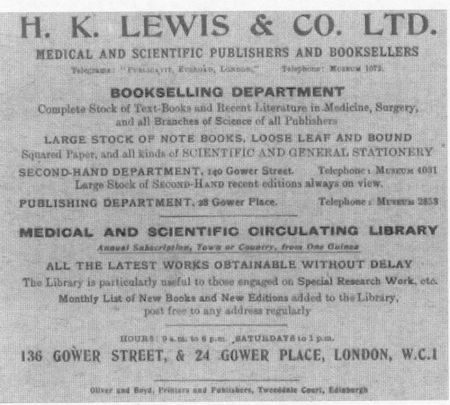This Victoria postcard with the red ‘UNIVERSAL POSTAL UNION’, ‘1½d’ and two deletions applied to the 2d overseas card was issued in 1891 and the printed stamp was cancelled with a duplex Melbourne in 1904. It was addressed to H.K. LEWIS Esq, Bookseller, Gower Street, London, England (Figure 1).
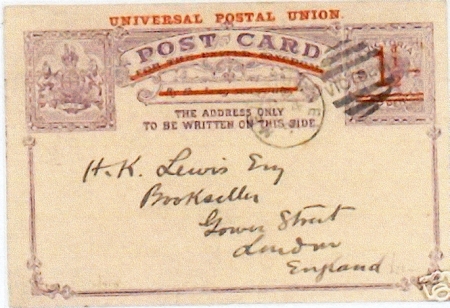
The reverse has a printed heading: Medical School Library, University of Melbourne, and is dated May 27 (?9), 1904. The message reads: “Sir, I beg you to accept the best thanks of the Faculty of Medicine for the undermentioned work which you have kindly presented to this library, Yours truly, [signed] J. S( ) Johnstone, Librarian. The book donated was shown as “Tooth Extraction. Gorham” (Figure 2).
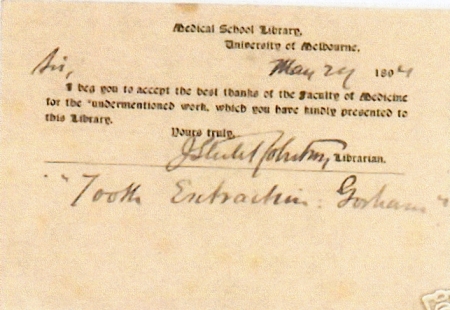
In spite of the large amount of archival data held by the University College London Archives, biographical data on the owner was difficult to access through the internet. The firm was started by Henry King Lewis (1822-99) in 1844 and it occupied 136 Gower Street and 28 Gower Place. In 1989 the business was purchased by the Pentos Publishing group. A picture of the H.K. Lewis’ premises taken from the Annual Dinner Programme for 1907 is shown in Figure 3.
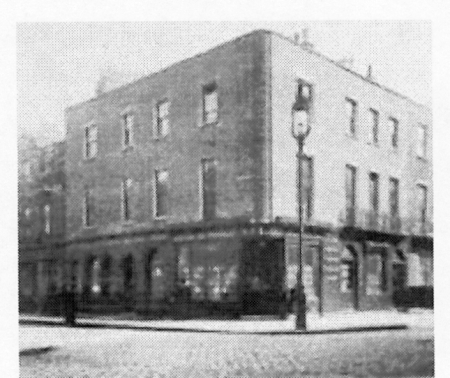
Dr. Om P. Sharma, a professor of medicine in Los Angeles described the company in the British Medical Journal on January 8, 2000. as follows: “Just a few blocks away at 136 Gower Street stood H.K. Lewis & Co. Ltd, booksellers. Founded by Henry King Lewis in 1844, it was also a lending library. The membership dues were minimal. Members could borrow books, regardless of price. It was the best bargain for those of us who had come from overseas with limited funds. Neither the book dealership nor the library now exist. The premises are now part of the University College Hospital.”
This prestigious publishing company and bookseller published in 1945 a red cloth covered book with a gilt title and crest, named Lewis’s 1844-1944 A Brief Account of a Century’s Work , with numerous black and white illustrations (Figure 4).
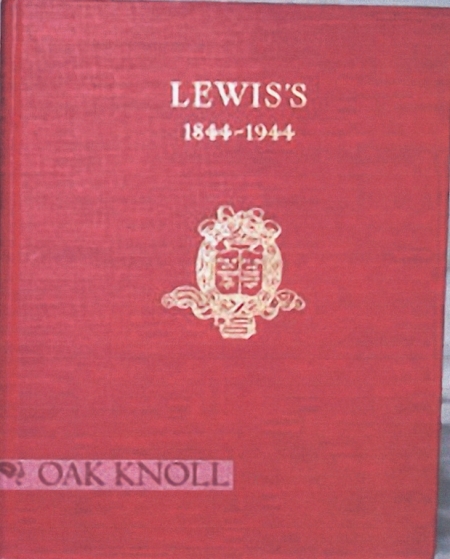
H.K. Lewis & Co. advertised extensively in numerous medical and scientific journals of the day and they did not restrict themselves to English language books. In addition to new books they had a second hand book section at 140 Gower Street and there was a scientific circulating library for subscribers. The Reading Room was opened daily for the use of the subscribers (Figure 5).
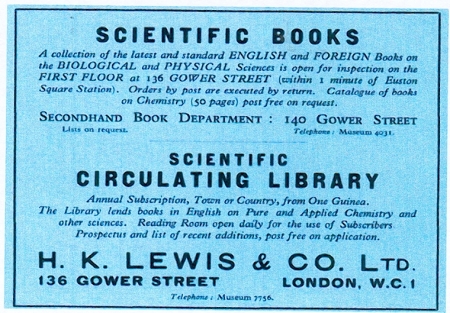
Prestigious medical books were on hand, and the company ordered new books on a remarkable range of medical conditions in all specialties. The establishment was responsive to requests of individual physicians and hospitals, and as this postcard showed they presented books to major medical libraries, such as that at the Melbourne University Medical School Library. John Gorham’s Tooth Extraction: A manual of the proper mode of extracting teeth went through 4 editions between 1869-1893. The variety of medical books sold is shown in Figure 6.
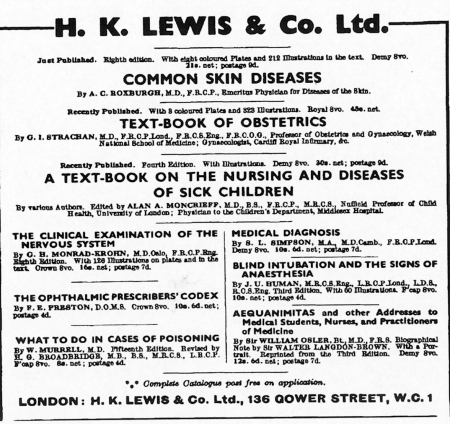
A lesser known feature of the firm was that they had a large stock of note books, loose leaf and bound; squared paper and all kinds of scientific and general stationery. This advertisement also states that their publishing department was separate at 28 Gower Place (Figure 7).
